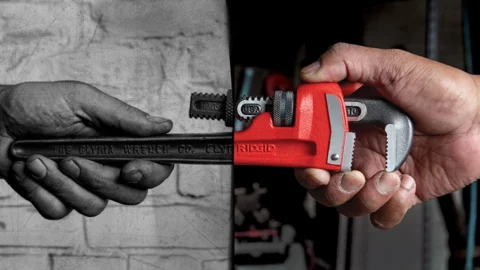To meet the challenges of climate change and more extreme droughts, the three metropolitan Melbourne water utilities are working together to explore new ways to further improve the performance of the water network, and ensure it operates even more efficiently and delivers greater value to their customers.
Early last year, City West Water, South East Water and Yarra Valley Water formed the Digital Metering Joint Program to collaboratively investigate digital water meters as one option to provide enhanced benefits and visibility for customers, and to ensure an efficient network for the future.
City West Water Managing Director David Ryan said the utilities see digital water meters as an important part of the wider digital transformation of the industry, enabling greater advancements and efficiencies which will benefit customers.
“The utilities manage more than 2.2 million water meters combined, and gaining customer support and choosing the right technology will be critical success factors for a potential meter replacement program.”
South East Water Chief Financial Officer and General Manager Corporate and Commercial Phil Johnson said digital metering was one part of his organisation’s vision of a digital utility.
“The ‘digital utility’ extends beyond the realm of digital meters, and considers how technology will transform the way water utilities operate in their entirety.
“This includes the capture and digitisation of data, process automation and integration, analytics driven insights, and technology assisted collaboration and delivery.
“What makes digital transformations different is the cohesive realisation of these digital attributes across organisational functions to deliver traditional business outcomes and new business opportunities,” he said.
Digital metering: an opportunity
Melbourne’s existing mechanical meters use technology that has remained largely unchanged since the 1940s. Meters are still read manually every quarter, which results in:
- A lack of detailed information to help customers understand and control their water consumption, and to help the government and utilities plan and coordinate infrastructure investments efficiently
- Some customers experiencing bill shock due to an inability to detect and repair leaks
- An inability to meet growing customer expectations for more information about their water services
- The current development of new digital meter technology will provide the ability for Melbourne to overcome all of these issues, and create further opportunity to solve some network planning and asset management challenges.
The lasting impact of drought
The Millennium Drought, which ran from 1996 to 2010, had a lasting impact on Melburnians’ water consumption, behaviour and attitudes to their water supply.
Currently, Melburnians use 22 per cent less water than they did before the drought.
Research by the utilities has found drought remains a top concern for Melburnians in regards to their water supply, and customers want utilities to be prepared for another future drought.
Digital meters provide customers with daily water consumption information and the ability to compare consumption to targets or restrictions, which may be necessary in the event of another drought.
This has the potential to provide Melburnians with a greater level of comfort about the reliability of their water supply in a time of increased climate uncertainty.
Access to more frequent usage information could even enable customers to find new ways to save more water.
The Millennium Drought also changed the way the utilities manage water, and led to the introduction of alternative water sources such as recycled water, stormwater harvesting, and the Victorian Desalination Project.
Yarra Valley Water Managing Director Pat McCafferty said by finding new ways to save water, the utilities can potentially defer future large capital investments in new water supplies.
“The current lack of usage information could be resulting in oversized, and therefore costlier, assets.
“Alternatively, if assets are undersized, they risk not meeting demand, resulting in customers experiencing pressure losses or service interruptions.
“One of the key successes of the Mackay Council digital metering upgrade was the council’s ability to defer capital investments due to lower water consumption rates,” he said.
More granular water information also enables the utilities to reduce costly and disruptive emergency repairs by predicting and fixing water network issues before they turn into bursts.
Collaboration the key
By working together on the Digital Metering Joint Program, the three utilities aim to develop a common approach to business cases, present a consolidated position and consistent messaging to government and customers, and potentially achieve economies of scale through bulk purchasing or sharing services.
The utilities are considering an Advanced Metering Infrastructure two-way fixed communications network and open standard solution that allows access to a large ecosystem of related product technology providers.
The utilities are conducting trials across a number of Low Power Wide Area carrier technologies.
The trials are being conducted across multiple geographical regions to test different topography for coverage as well as functionality, maturity, service specification, asset life, and battery load.
Trials are also being conducted to simulate real-life conditions in a laboratory to test–using various metering and communications technology combinations–the impact on battery power consumption of the water meter component, communications component, and communications chip against various test case scenarios.
A customer-focused solution
The ability of digital meters to detect leaks could help reduce the number of enquiries the metropolitan Melbourne utilities receive each year that relate to high bills, high usage, and leaks, which can be as high as a third of all enquiries.
The utilities have estimated the cost of managing these enquiries under a “business as usual” scenario could exceed $20 million per year by 2041.
The New York Department of Environmental Protection’s Automated Metering

Digital Meters have the potential to provide customers with almost real-time usage information
Infrastructure program installed 820,000 digital water meters.
Its leak notification program has saved customers more than $26 million since its inception in 2011, and billing disputes have reduced by 56 per cent.
Digitising the entire network also has the potential to reduce non-revenue water losses, which account for 10 per cent of Melbourne’s total water use.
Even though this is efficient for the sector, this is a key area where water can be saved.
In considering and building the business case for digital metering, the utilities stress the importance of considering less quantifiable benefits such as:
- Empowering customers with information so they can choose to change their consumption behaviour to save water and save on their bill
- Meeting changing customer expectations for digital customer service channels and personalised information and tips
- Offering more frequent billing so households can better manage expenses
Growing support
Research undertaken for the program has found knowledge and support of digital meters is growing and 69 per cent of Melbourne water customers support the potential introduction of digital meters in the near future.
The benefits of a collaboration by the three metropolitan utilities is that Melburnians are ensured a better digital metering experience if and when the time is right.
















